How User Growth Increases Product Value - Network Effects 101
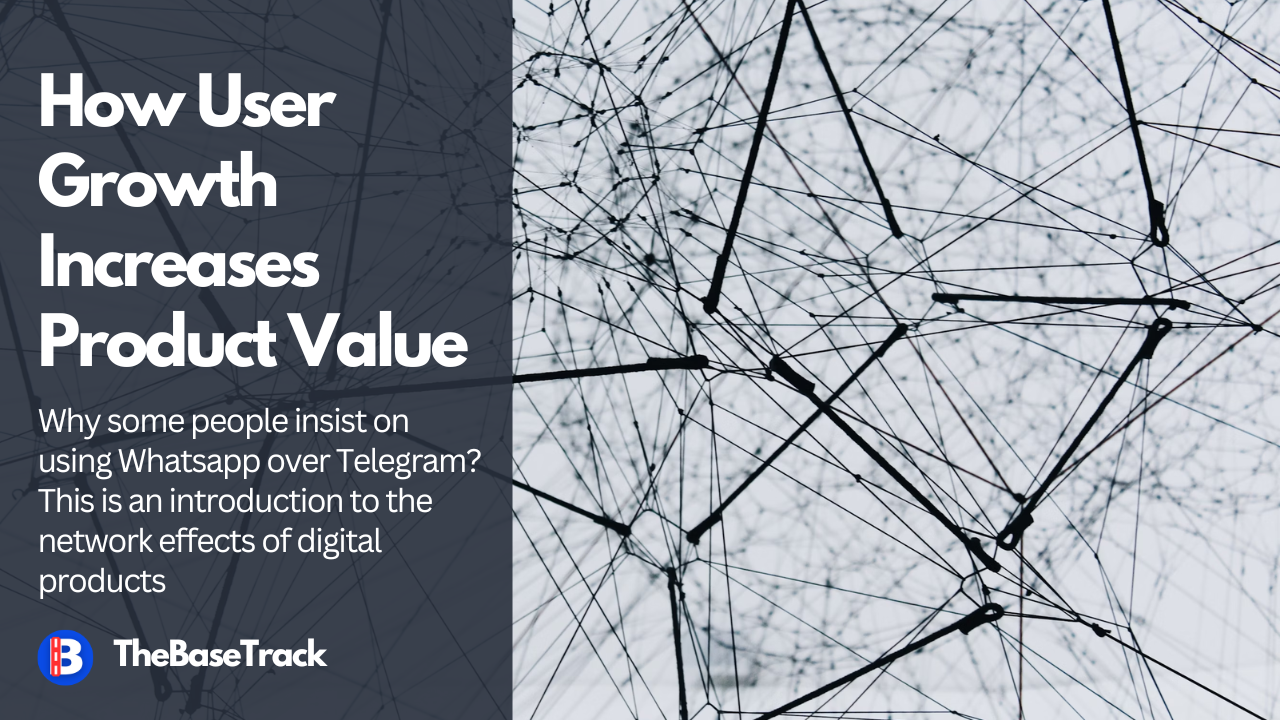
Have you ever questioned, exactly why people choose to use and pay for a product over one another?
Why does one choose to use GrabFood over Baemin in Vietnam? Why does people choose iOS over Windows phones? Why some people insist on using Whatsapp over Telegram?
One explanation for this is to look at the product's intrisic value, this can easily be explained by asking some questions:
(1) How much time and cost does a product save for each individual users?
- For example, messenger saves me a lot of money compared to the day when I have to pay my phone bills for the sake of connecting with other people
(2) What jobs to be done have a product solved for the users?
- For example, facebook gets me updated for what is happening with the world in an efficient way, without going outside and see it myself
But that does not totally explain the whole picture. You can build an app that resembles Facebook and I am sure you won't have that kind of loyal customers like Facebook had - that customers won't use your product solely based on the utility it's given.
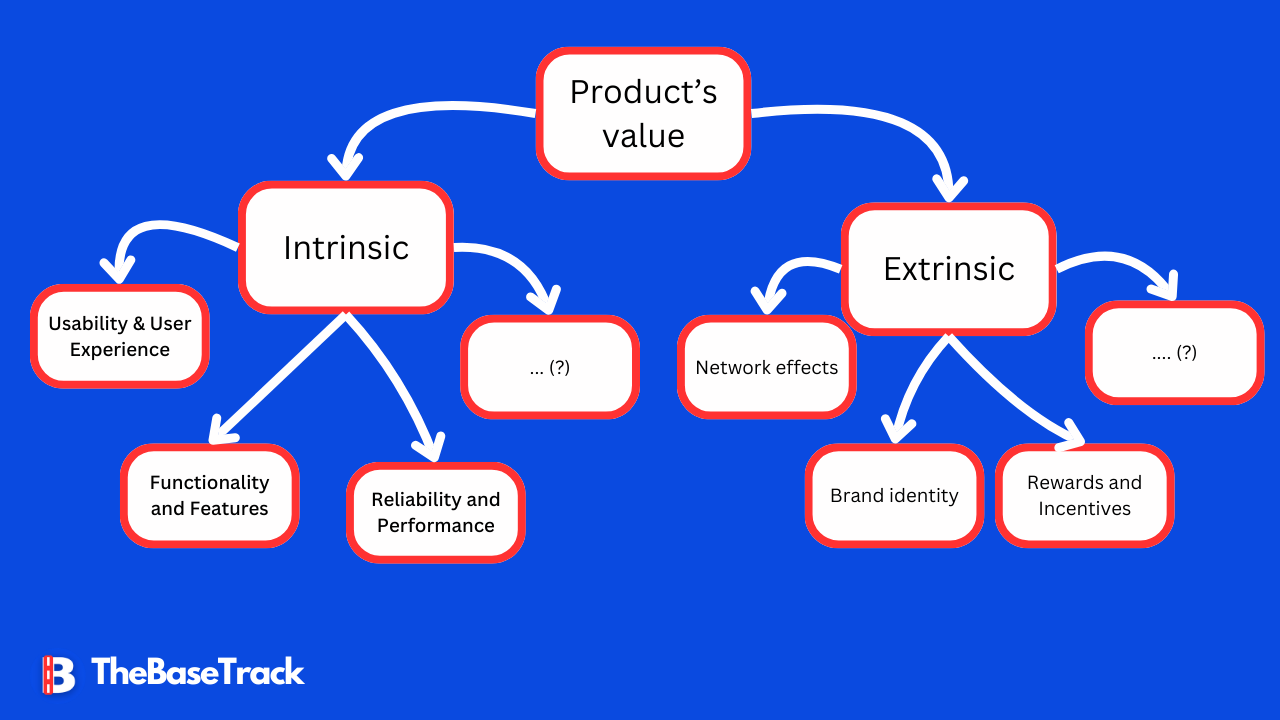
The missing (and perhaps, complementary) pieces of products value are value generated from the usage of the product themselves - a.k.a the extrinsic value, and are separate from from intrinsic product values.
In this post, I will dig deep into the one of the extrinsic value called the Network Effects - one of a stark kind of defensible product values that drives user retention of an app.
Disclaimer: I'm not trying to explain everything through network effects lense (and you should not too!). Network effects theory is just a model attempting to partially explain how users make decision of using a product over another.
What is network effects?
About 70% of global tech equity value comes from firms that rely on network effects - According to Morgan Stanley. This effects are so fascinating that every new user in the network increase the value of product for everyone else.
If network effects was so incredible - but what exactly does it mean?
Network effects are not viral effects
The most common misconception of network effects are that they're viral effects. This is certainly not true.
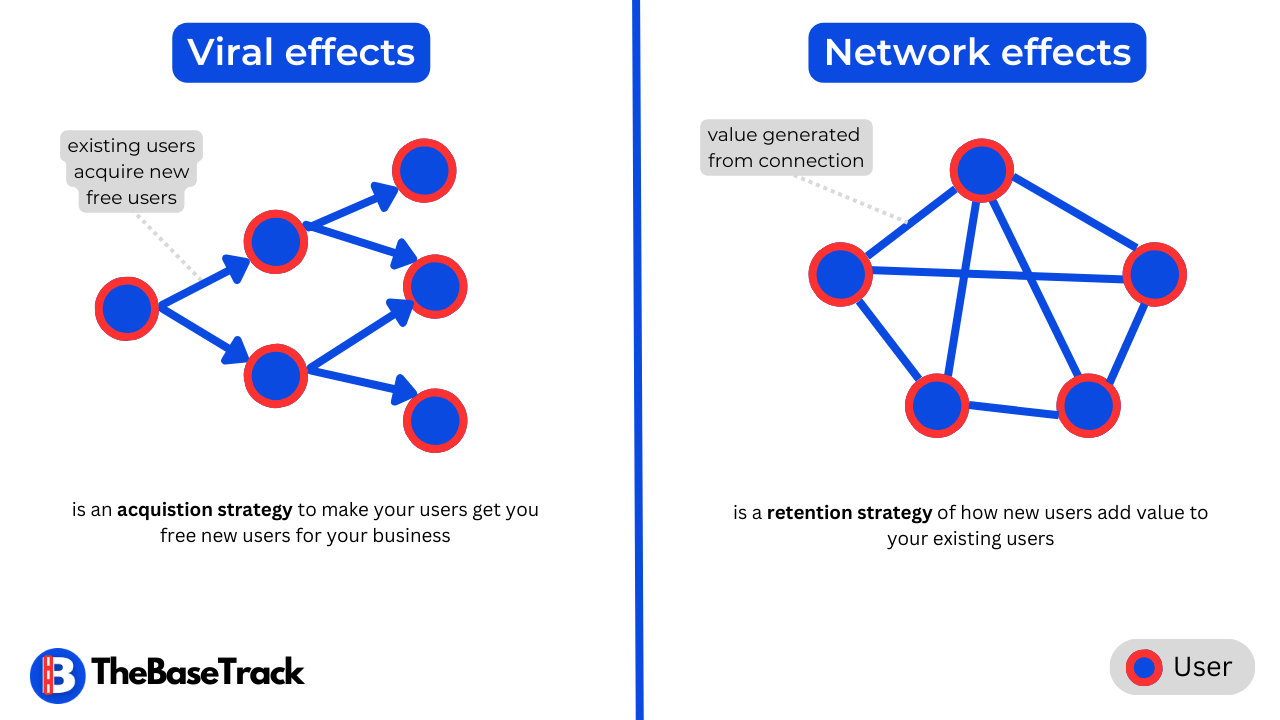
While viral effects concern more about how your existing users get you free new users, network effects concern how new users add value to existing users - and eventually as the networks grows, the more value it is for everyone else.
Network effect is expensive to produce, but crucial to successful startup
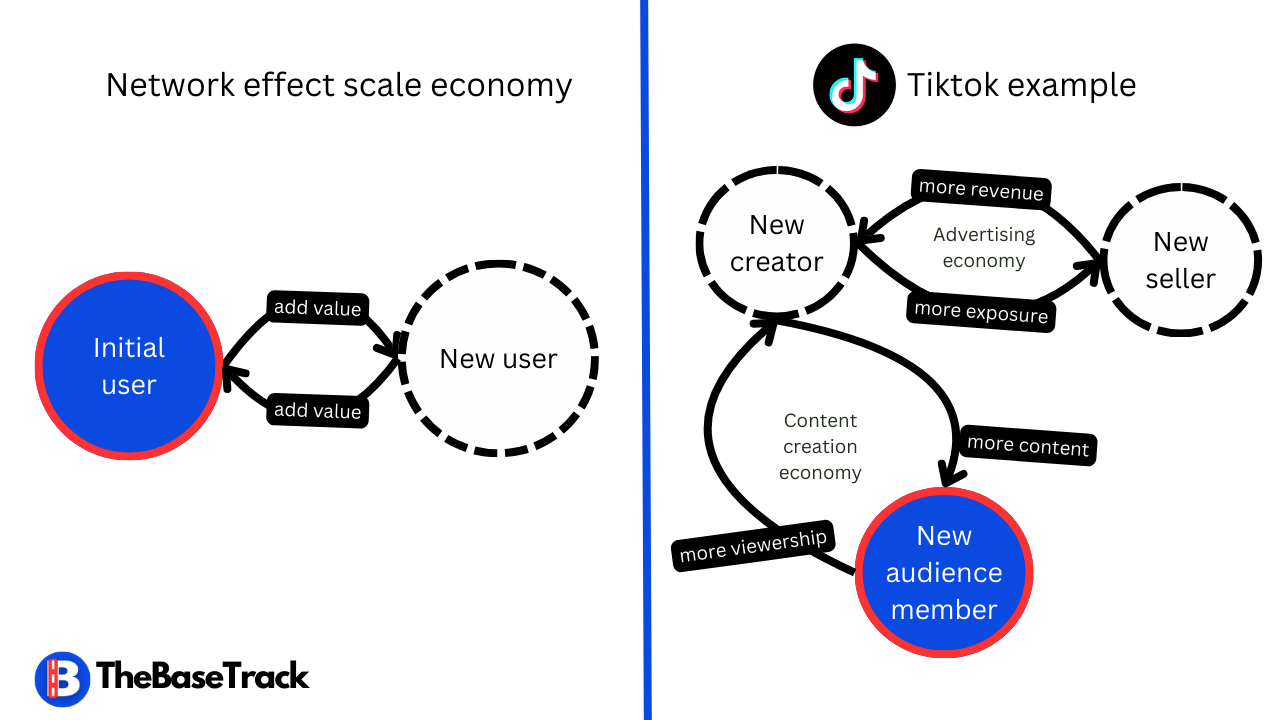
Network effects is that it requires upfront a lot of time and perhaps capital to build it at first, the hard thing is to have your engaged with your system and contribute in value creation with others in the network.
After you have put some effort in building these close-knit and white hot center of communities, the value of the network should grow geometrically.
Types of network effects
There are many types of network effects, most of them I laid down here are 16 types of network effects - those explored by nfx - a VC that focuses on investing in startups with strong network effects.

Fun fact: the founding partner of nfx - Peter Flint was so fascinating about the network effects so I named the firm after the effect - it is interesting.
Direct
The first type of networks effects is direct or same-sided network effect. The reason for the name is that the value for each user in the network grows benefits the user themselves.
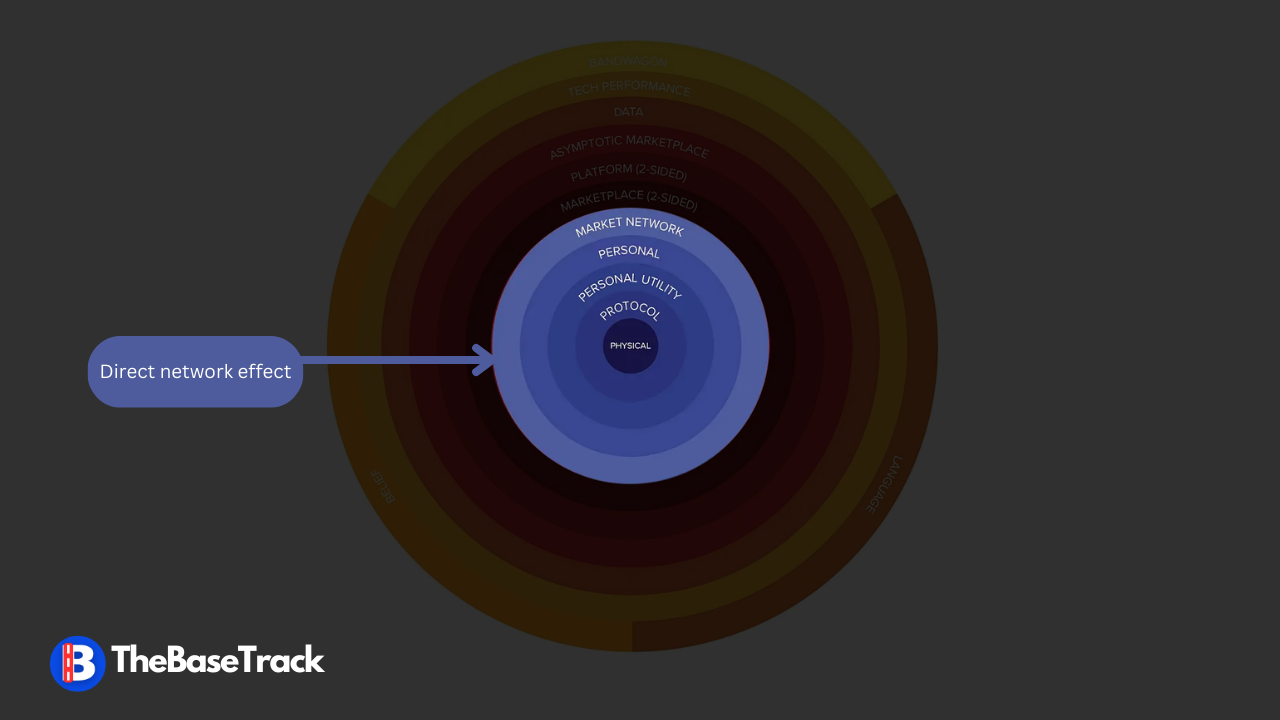
Take telegram as example, a new (adjacent) user allows other users in the network to call them and vice versa.
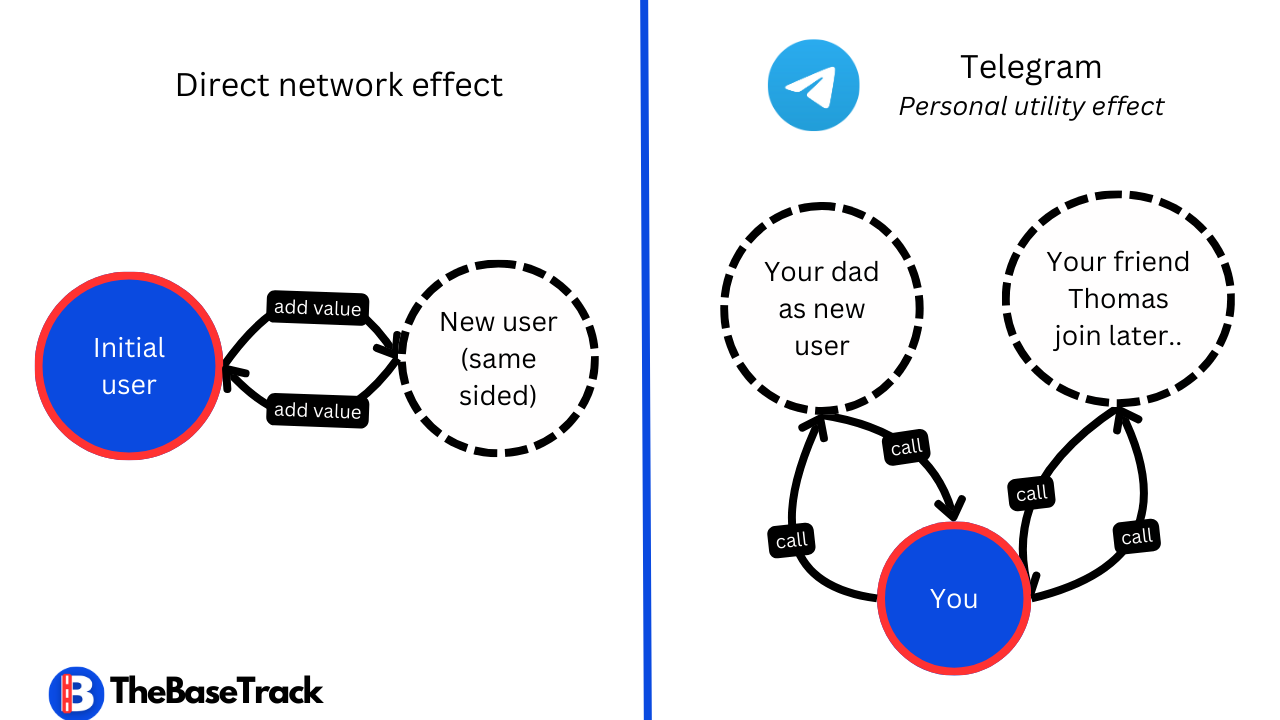
2 sided effects
The second type of network effects is 2-sided network effects. It conveys how new users on one side increase value for the other side of the product.
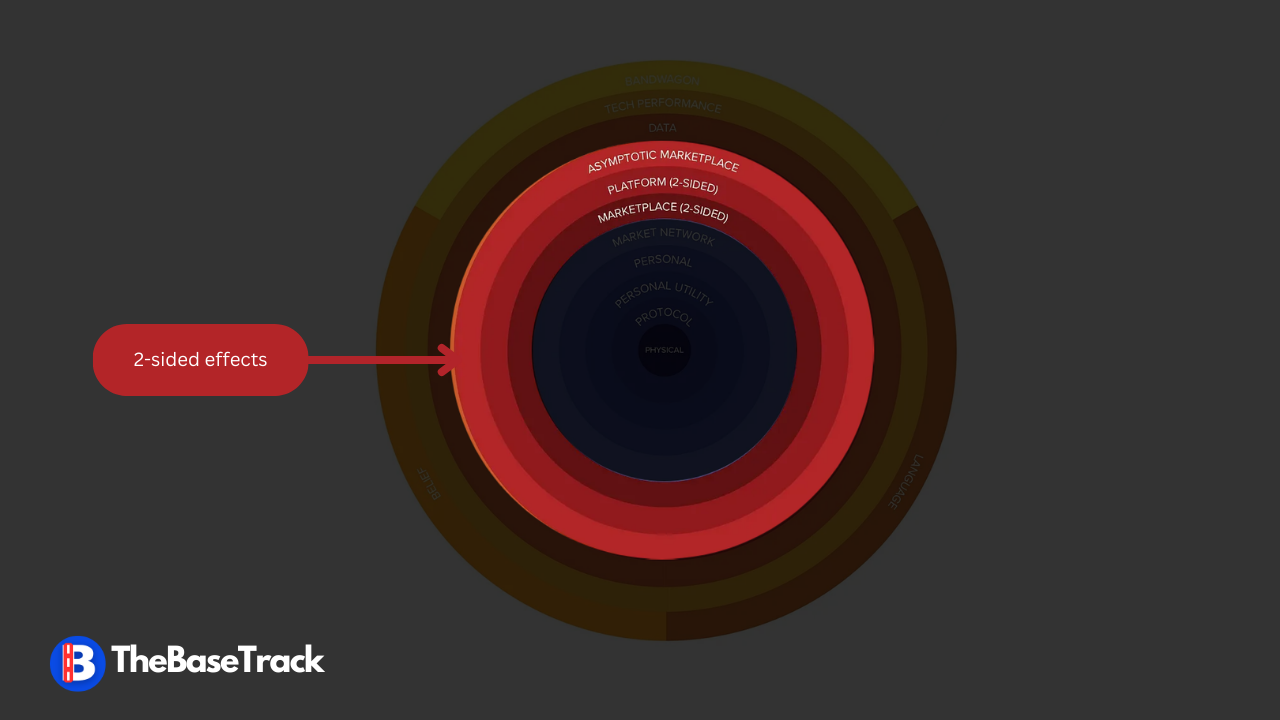
2-sided classified listing like craiglist is an example: The more buyers grow, the more the more options there are for new buyers and vice versa.
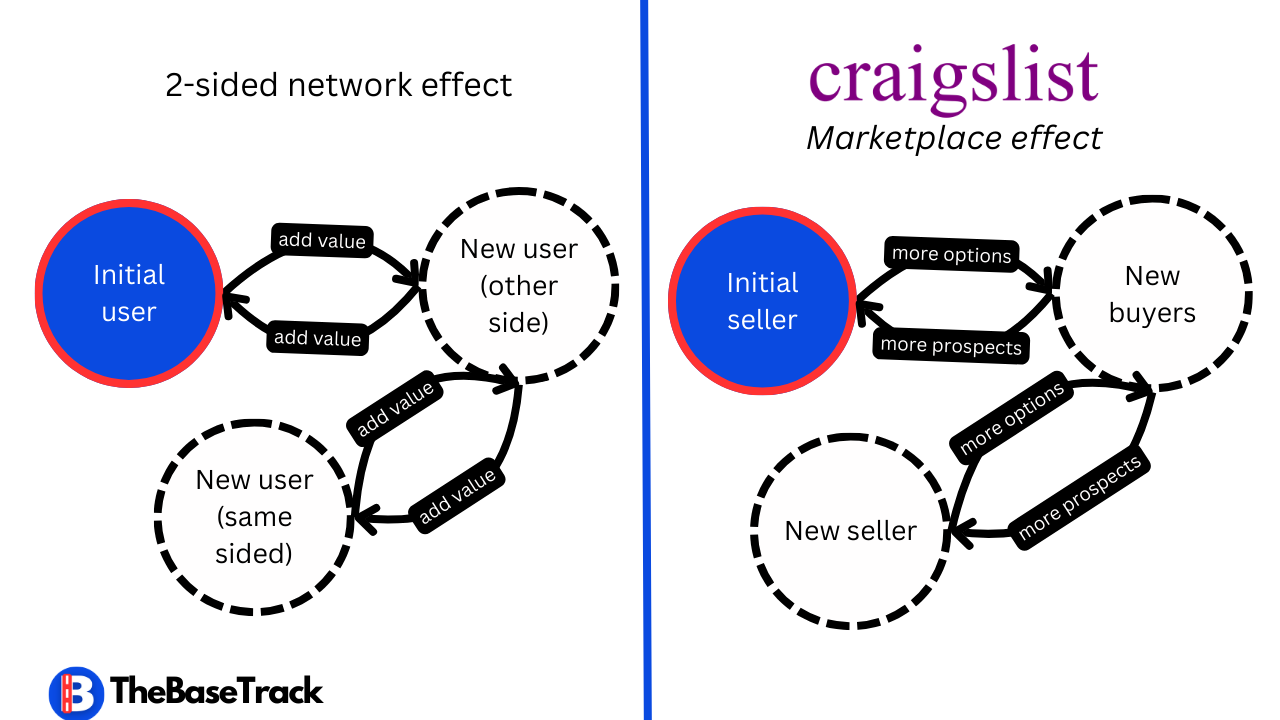
Data
Data network effect is the other interesting defensibility here.
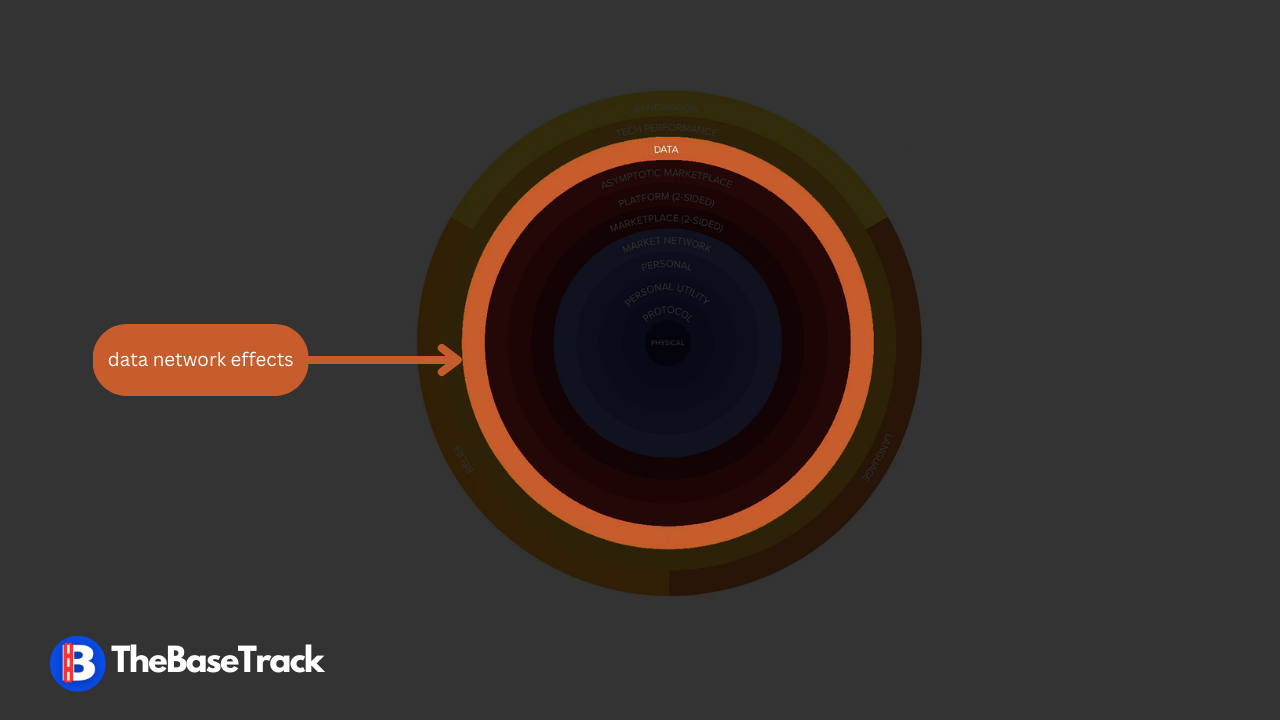
Think of a service like Waze, where new users generate new data - which then be extracted into real-time updates and more optimization of route that eventually benefits the existing users.
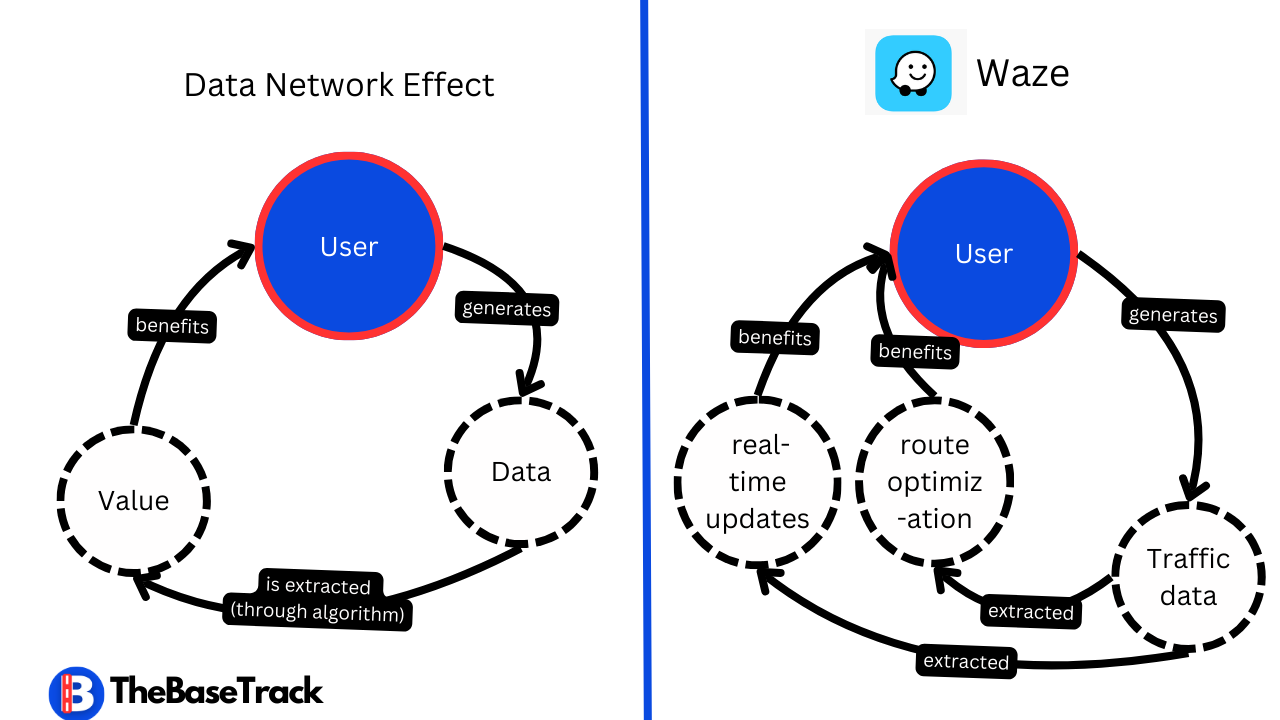
Notes on Data Embedding, Data Scale, and Network Effect
- In practice, there is a tendency to conflate data network effects with data scaling and data embedding, though they represent distinct concepts
- Data scaling refers to the way in which the increasing volume of data impacts the performance and capabilities of data processing systems. Larger datasets can lead to more accurate models and predictions, provided that the infrastructure and algorithms are capable of handling this scale efficiently.
- Data embedding concerns the manner in which data is integrated into user experiences, affecting users' engagement and commitment to the system. Effective data embedding ensures that as the data grows, users find the system more personalized and relevant, which increases their reliance and interaction with the platform.
- Data network effects focus on the value extraction from this growing dataset, which, through sophisticated analysis and data mining techniques, generates insights that benefit all users. The more data that is inputted into the system, the smarter the system becomes, and the more valuable it is for each user. This self-reinforcing loop is at the heart of the data network effect.
Technical Performance
This type of network effect conveys how new users improve tech performance, which can then benefits back the existing users.
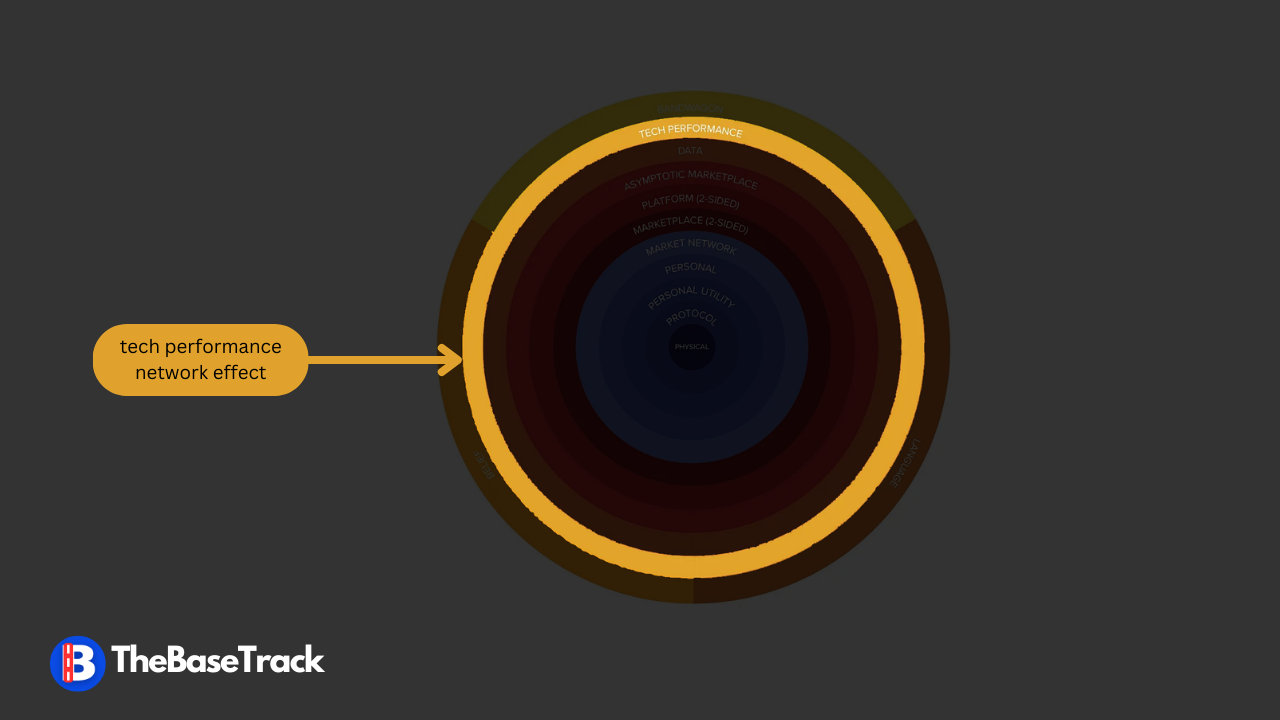
Think a P2P network like torrent or blockchain. The more people in the network, the faster and efficient the network is for everyone else
Social
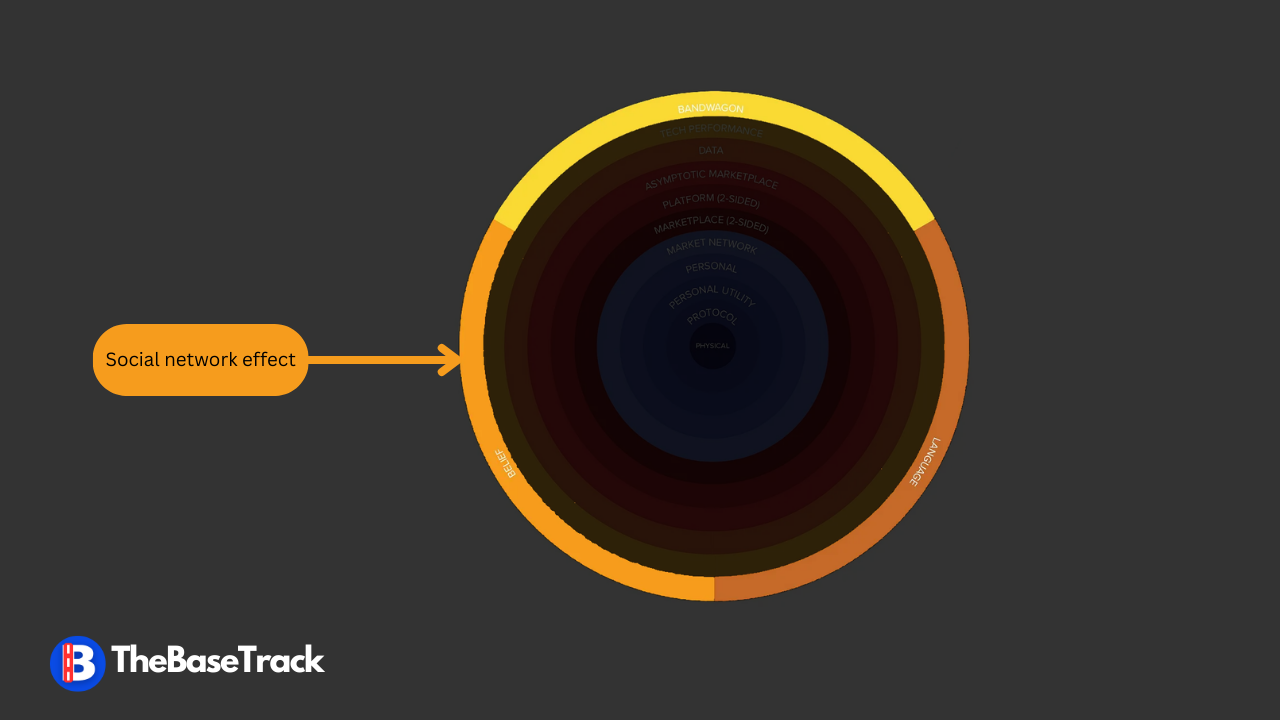
The last effect lying at the outer crust of the network effects map is the social effects.
This network effect include 4 sub effects, including:
- Bandwagon - Example: Apple Products - it made people don't want to be left out
- Language - Example: "Google it"
- Belief - Example: Bitcoin, Metaverse, etc.
What network effects might have missed?
The network effects as we have learned in the first section - are just one of many types of defensibility a product has. The success of a product also require a harmonic interplay between its intrinsic value (the core problem that it solves for the customers) and extrinsic value (network values et. al.)
Sum up
To sum up, here are some key take aways from the post:
- Extrinsic and intrisic view on product vlaue
- Network effect is not viral effect
- 5 modes of network effects
- Interplay between intrinsic and extrinsic value of a products
In the next post, we will try to explore deeper how network effects are built and what key actions should a Product Manager take to build a strong network.
Let's try to answer the questions we tried to ask at the beginning:
(1) Why in the US people choose Whatsapp over Telegram?
While you see Telegram wins Whatsapp on its feature set (secret chat or encrypted messages), most people still uses Whatsapp to get in touch with their networks - which is already on the Whatsapp itself. In those case, those feature set value is not that valuable compared to the ability to connect with others in the network.
(2) Why isn't Whatsapp popular in Vietnam like it is in the US?
Despite the popularity in Western Countries, Whatsapp is not that popular in Vietnam.
In Vietnam, 86% of the Vietnamese population use Zalo a Vietnamese messaging platform. Network effects for Zalo case are Personal Utility (Vietnamese use it as their personal identity) and Bandwagon (Nobody wants to be left out of the race), so as Zalo grew, it becomes more and more dominate in the messaging market in Vietnam since the network connection just got tighter and tighter.
Reference














